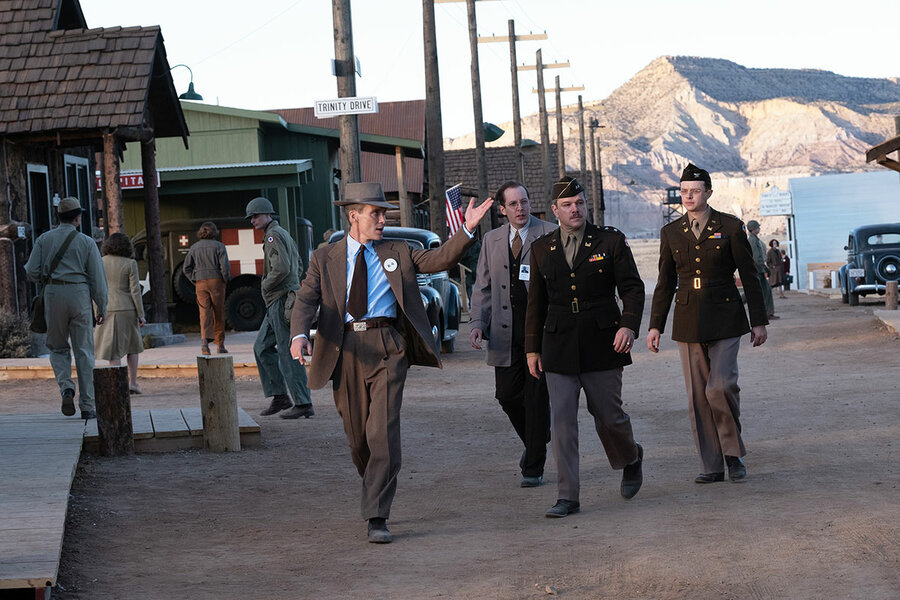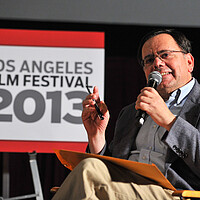‘Oppenheimer’: An ambitious – and epic – cautionary tale
Loading...
“Oppenheimer,” the new Christopher Nolan movie starring Cillian Murphy as J. Robert Oppenheimer, “the father of the atomic bomb,” does not present itself as a simple biopic. Instead, it’s scaled to be the biopic of all biopics. It also functions as a kind of explosive device all on its own, igniting questions and controversies about the morality of warfare, the bloody crossroads between science and politics, the limits of power, and much else in the deepthink realm. Nolan is perhaps best known for the “Dark Knight” movies, but forget Batman. For Nolan, Oppenheimer is the ultimate hero martyr.
This is a lot of baggage for any movie to carry, especially a big Hollywood movie shot in IMAX and aimed at a popular audience. Perhaps inevitably, it falls short of its ambitions. But it’s bracing to see a studio movie these days, particularly one with such huge scope, that at least attempts to serve up more than recycled goods.
Its time frame, as is often the case in Nolan’s films, is nonlinear, shuttling mostly between Oppenheimer’s life as a physicist heading up the top-secret Manhattan Project at Los Alamos, New Mexico, and his eventual downfall more than a decade later in the red-baiting McCarthy era. The switching back and forth is unwieldy, and there is yet a third major postwar section involving Oppenheimer’s chief nemesis, former Atomic Energy Commission Chair Lewis Strauss (a great Robert Downey Jr., in the film’s best performance). And yet, to some extent, the unwieldiness contributes to the film’s overall sense of almost apocalyptic doominess. Past, present, and future events bleed into each other, offering no escape routes.
Why We Wrote This
What can a film about the origins of the atomic bomb and its “father” bring to modern discussions about nuclear warfare?
A mass of contradictions, Oppenheimer is not your typical movie hero, or even antihero. Intellectually prodigious from an early age, he was also unapologetically arrogant, a womanizer, fatally naive about the ways of the world, and, with his signature pork pie hat, also something of a dandy. He was also a Communist sympathizer in his early years, although, unlike his brother (Dylan Arnold) and a handful of friends, or his troubled lover and his wife, he was never a party member. As Jean Tatlock, the doctor with whom Oppenheimer was having an affair, Florence Pugh brings her trademark intensity, while Emily Blunt is too little used as Kitty Oppenheimer. Her husband’s political sympathies would normally have been enough to disqualify him to head the team that eventually created the atomic bombs that fell on the Japanese cities of Hiroshima and Nagasaki, killing more than 100,000 people. But the project’s director, Gen. Leslie Groves (a strong Matt Damon), decided otherwise – even though it had been reported to him that Oppenheimer “couldn’t run a hamburger stand.”
Nolan sees Oppenheimer as both a man of flesh and blood, and a holy martyr. There aren’t many emotional levels to Murphy’s performance – the real Oppenheimer was notoriously charming – but Murphy has the requisite saintly, slightly famished look that Nolan no doubt sought. (It’s the same look as the photo that graces the cover of the 2005 Oppenheimer biography “American Prometheus,” the movie’s primary source, by Kai Bird and Martin Sherwin.) The great physicist saved the world only to usher in a more dangerous world of deadlier hydrogen bombs. His opposition to those bombs led to charges of disloyalty and capped his downfall.
As a visual artist, Nolan can be compelling and immersive, as in the Los Alamos scenes, or overwrought, as in a few fantastical sequences that resemble jumbo planetarium light shows. The thunderous score by Ludwig Göransson, which tends to drown out the actors, is in the movie to make doubly sure we are impressed with the momentousness of the material. Nolan needn’t have worried. Oppenheimer’s moral crises are intensely personal but on such a monumental scale that they take on the dimensions of myth. They justify the bigness of this three-hour movie. Famously quoting from the Bhagavad-Gita, a Hindu scripture, in the aftermath of the successful atomic bomb test, Oppenheimer softly mutters to himself, “Now I am become death, the destroyer of worlds.” Awestruck and aghast, there is not a trace of self-importance to his words.
That A-bomb test sequence is the film’s great centerpiece. The infernal fire seems to reach infinity. What isn’t widely known is that the Los Alamos scientists were not entirely sure the explosion would not destroy the planet. What connects this movie to our present day is the realization that this nuclear horror could still happen. “Oppenheimer” is more than an epic biopic. It’s an epic cautionary tale.
Peter Rainer is the Monitor’s film critic. “Oppenheimer” is rated R for some sexuality, nudity, and language.









